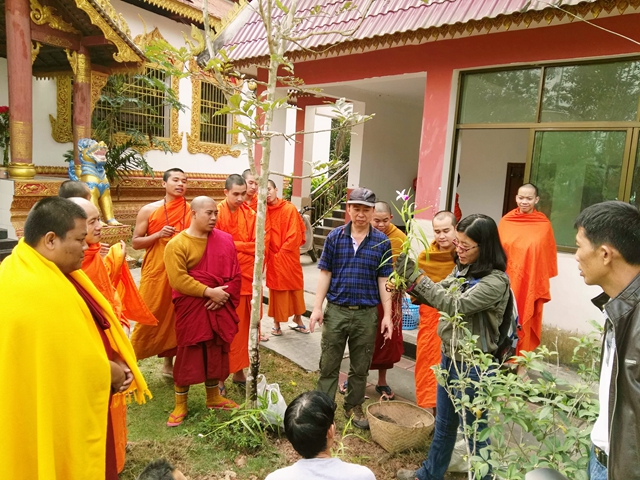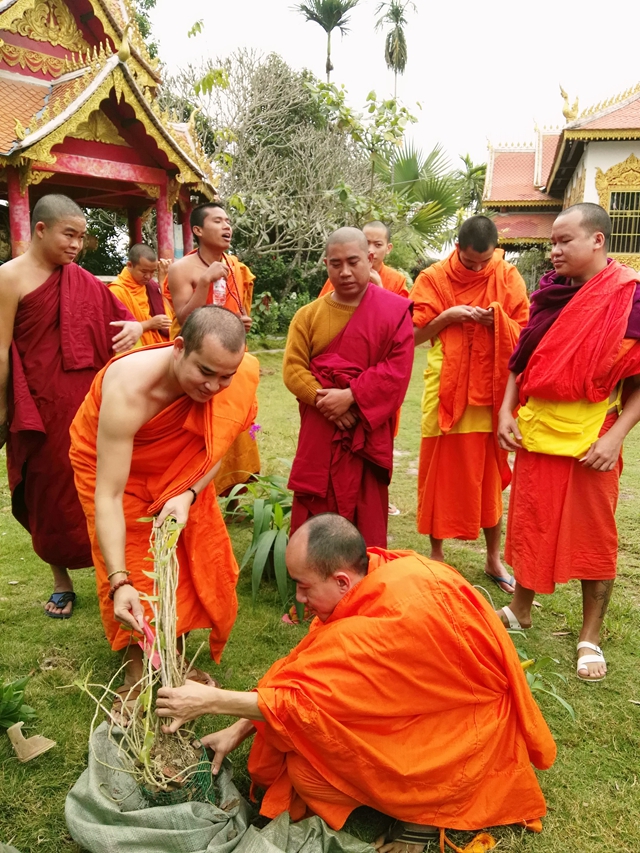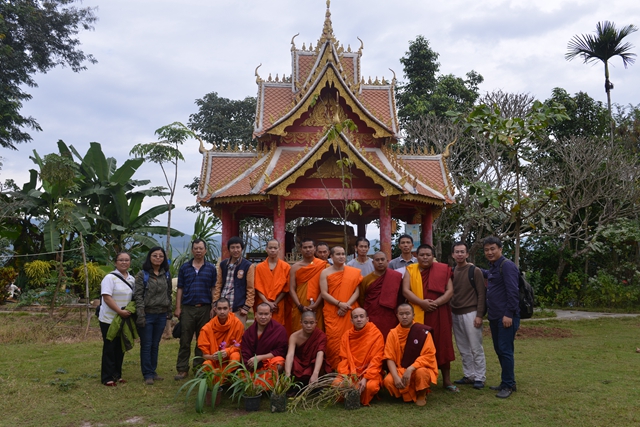Xishuangbanna is one of the most orchid-rich areas in China. However, over-collection and habitat loss have taken many orchid species towards extinction in the wild and orchids are among the most threatened flowering plants.
As part of efforts to protect orchid plants and increase public awareness of orchid conservation, Xishuangbanna Tropical Botanical Garden (XTBG) sends orchid plants to local temples and train religious people to cultivate and care them. It is to use temples to conserve orchid species.
In xishuangbanna where Buddhism was introduced in the Tang Dynasty, a temple is a place to practice religious activities. A village must have a temple, and currently, there are more than 500 temples in Xishuangbanna. The Dai people both in Polytheism and their traditional beliefs have a very close relationship with plant diversity. Religious beliefs are powerful, and the religious system is strongly developed in the area.
The temple is not only the place where people practice religious activities, but also the school for learning traditional knowledge. Traditionally, young men of the Dai nationality must stay in the temple for some years to learn the traditional knowledge.
By using the temples and training religious people, the general public people may have a better understanding on orchid conservation. Meanwhile, orchid plants may add ornament to the temples and beautify the environment. It may also contributes to development of ethnic ecotourism.

Teaching religious people to cultivate and care orchids

Religious people practice planting orchids

XTBG staff and religious people pose a photo



